Complete Solutions to Exercises (Linked Comprehension) of chapter CARBOXYLIC ACIDS AND THEIR DERIVATIVES of Class 12 book with complete answers and questions
| Class 12 | CHEMISTRY |
| Chapter | CARBOXYLIC ACIDS AND THEIR DERIVATIVES |
| CENGAGE CHEMISTRY | Exercises (Linked Comprehension) |
| Number Of Questions | 34 |
| Academic Year | 2023-24 |
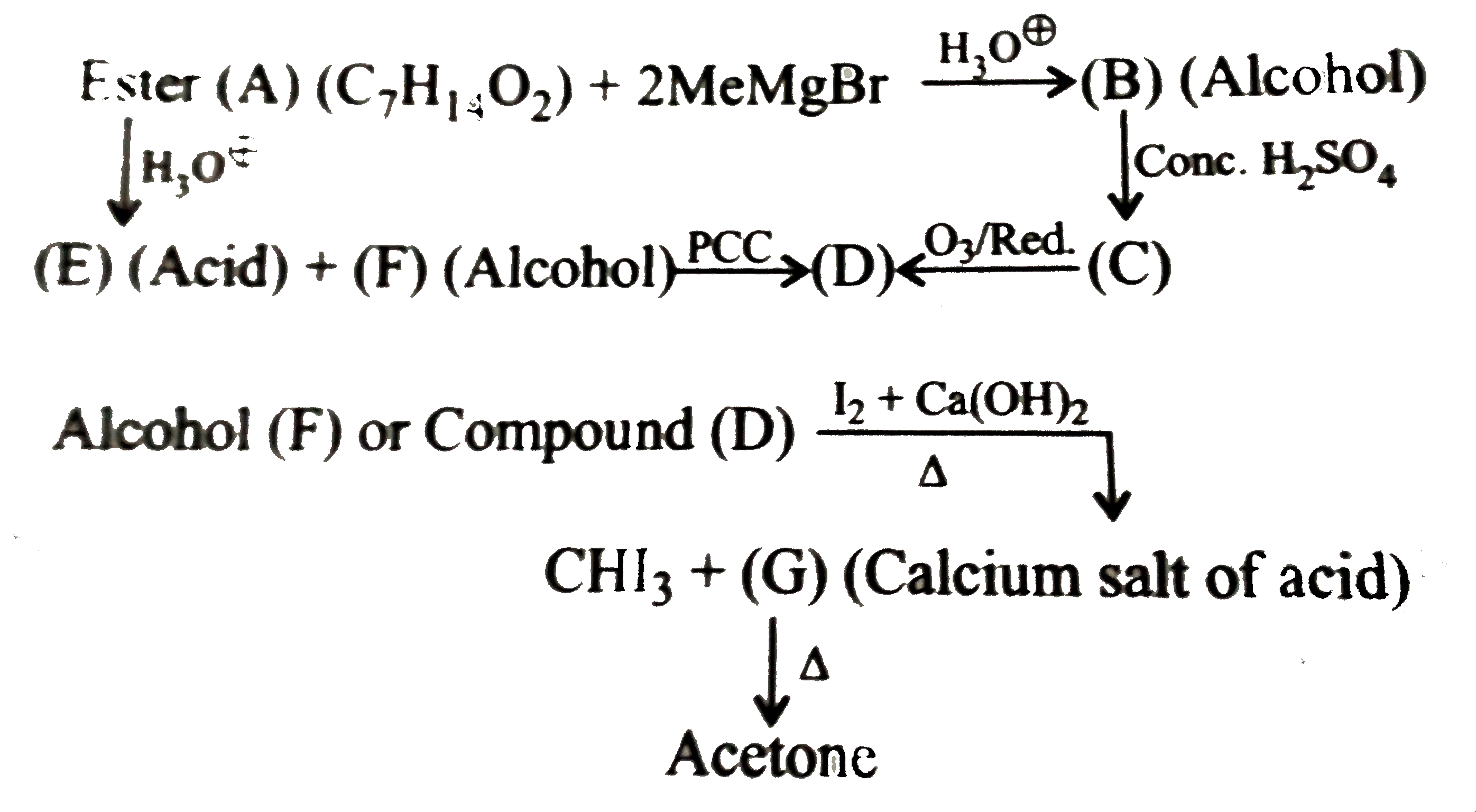
Ester `(A)` is :07:13View Solution
Alcohol `(B)` is :07:13View Solution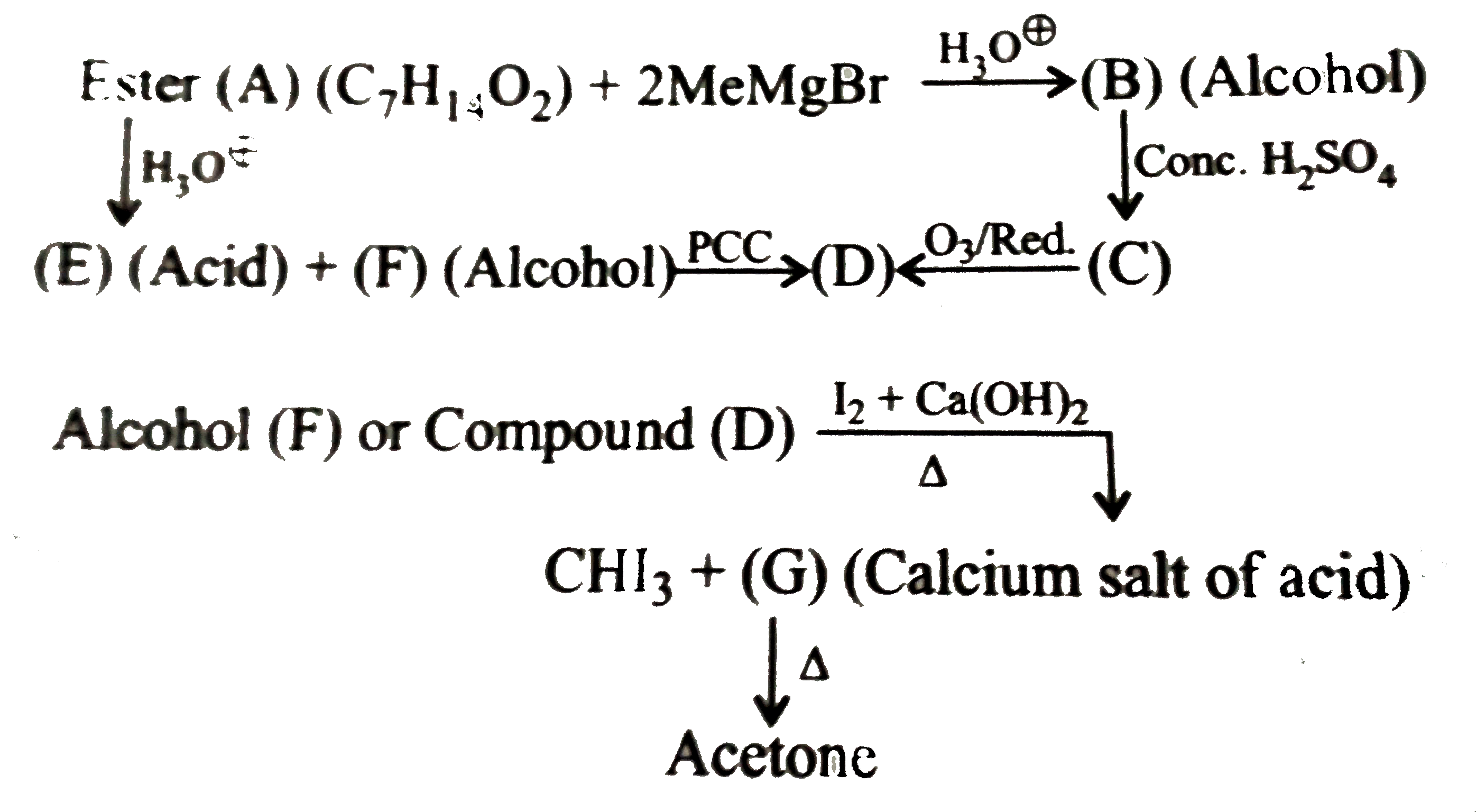
Alcohol `(F)` is :07:13View Solution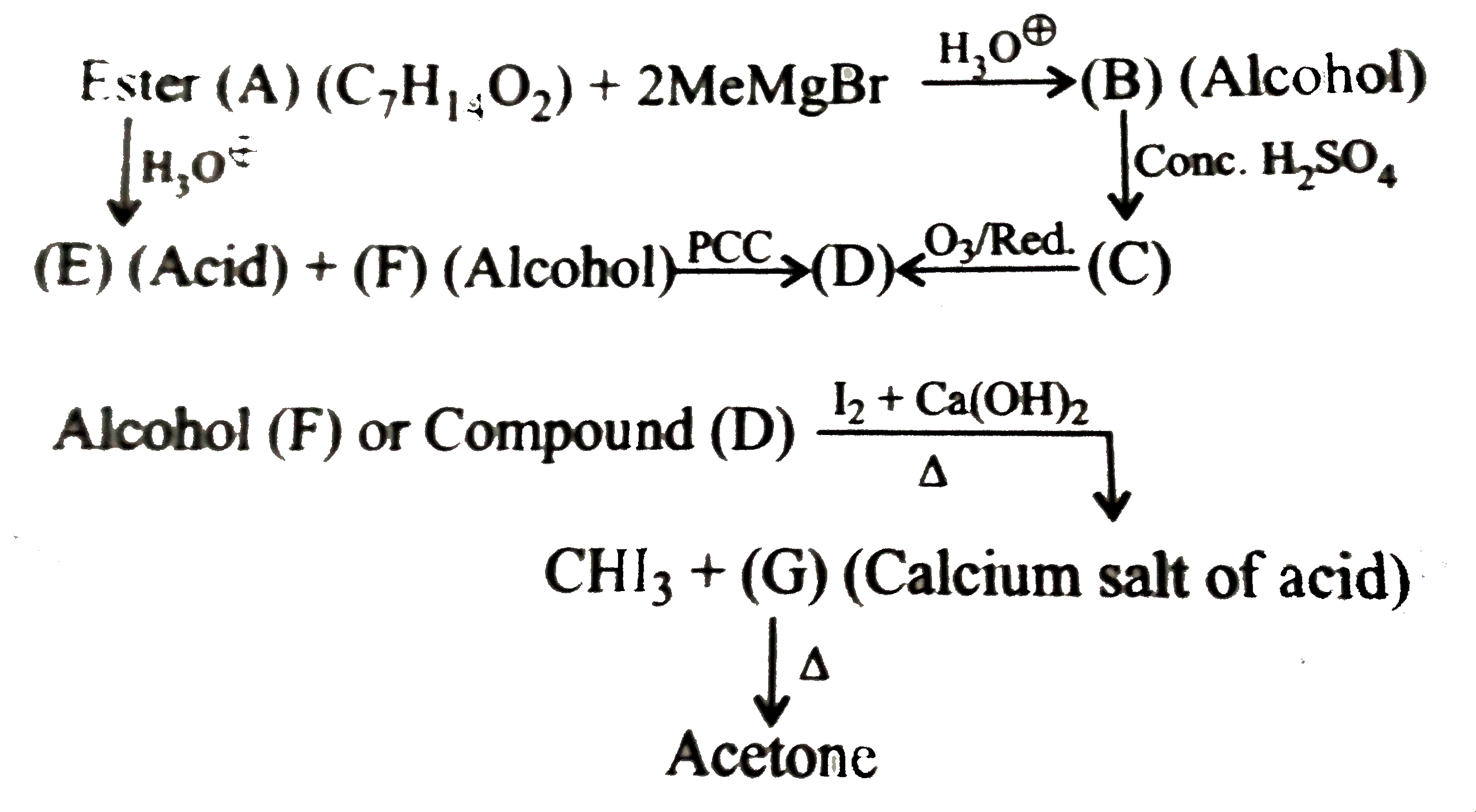
Acid `( E)` is :07:13View Solution
Compound `(D)` is :07:13View Solution
Carboxylic acid `(A)` is:04:41View Solution
Carboxylic and `(B)` is :04:41View Solution
Compound `( C)` is :04:41View Solution
Compound `(D)` is :04:41View Solution
Compounds `( C)` and `(D)` can be distinguished by :05:54View SolutionFour isomeric optically active compounds `overset (NaHCO_3) rarr CO_2 (g) (A, B , C, D) (C_4 H_8 O_3)`
Compound `(A) overset (LAH) rarr ( E)` (Archiral compound)
Compound `(B) overset (KMnO_4) underset (or CrO_3) rarr` Inert to oxidation.
Compound `( C) underset (NaOI//H_3 O^(oplus)) rarr CHI_3 (Yellow ppt.) + Compound (F)`.
Compound `(A)` is :07:10View SolutionFour isomeric optically active compounds `overset (NaHCO_3) rarr CO_2 (g) (A, B , C, D) (C_4 H_8 O_3)`
Compound `(A) overset (LAH) rarr ( E)` (Archiral compound)
Compound `(B) overset (KMnO_4) underset (or CrO_3) rarr` Inert to oxidation.
Compound `( C) underset (NaOI//H_3 O^(oplus)) rarr CHI_3 (Yellow ppt.) + Compound (F)`.
Compound `(B)` is :07:10View SolutionFour isomeric optically active compounds `overset (NaHCO_3) rarr CO_2 (g) (A, B , C, D) (C_4 H_8 O_3)`
Compound `(A) overset (LAH) rarr ( E)` (Archiral compound)
Compound `(B) overset (KMnO_4) underset (or CrO_3) rarr` Inert to oxidation.
Compound `( C) underset (NaOI//H_3 O^(oplus)) rarr CHI_3 (Yellow ppt.) + Compound (F)`.
Compound `( C)` is :07:10View SolutionFour isomeric optically active compounds `overset (NaHCO_3) rarr CO_2 (g) (A, B , C, D) (C_4 H_8 O_3)`
Compound `(A) overset (LAH) rarr ( E)` (Archiral compound)
Compound `(B) overset (KMnO_4) underset (or CrO_3) rarr` Inert to oxidation.
Compound `( C) underset (NaOI//H_3 O^(oplus)) rarr CHI_3 (Yellow ppt.) + Compound (F)`.
Compound `(D)` is :View SolutionFour isomeric optically active compounds `overset (NaHCO_3) rarr CO_2 (g) (A, B , C, D) (C_4 H_8 O_3)`
Compound `(A) overset (LAH) rarr ( E)` (Archiral compound)
Compound `(B) overset (KMnO_4) underset (or CrO_3) rarr` Inert to oxidation.
Compound `( C) underset (NaOI//H_3 O^(oplus)) rarr CHI_3 (Yellow ppt.) + Compound (F)`.
Compound `(F)` is :07:10View Solution(i) Carboxylic acid

(ii) Compound `(D)` is prepard by carbonation`(Mg//ether, CO_2//H_3 O^(+))` of compound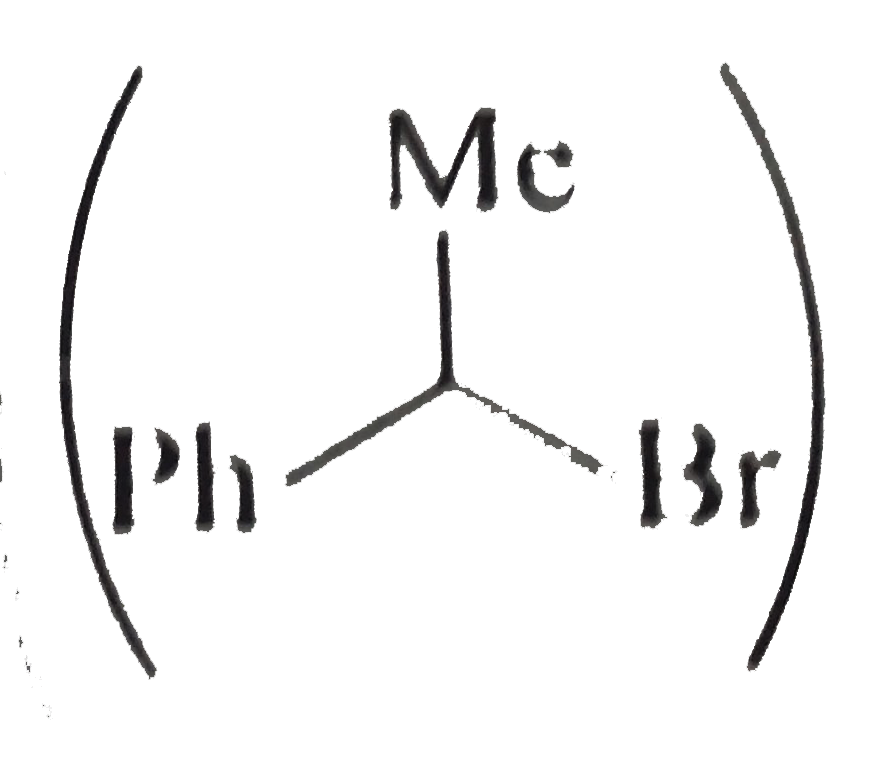
(iii) Compounds `(A)` and `(D)` give positive test with `CrO_3` in acid.
Compound `(A)` is :06:32View Solution(i) Carboxylic acid

(ii) Compound `(D)` is prepard by carbonation`(Mg//ether, CO_2//H_3 O^(+))` of compound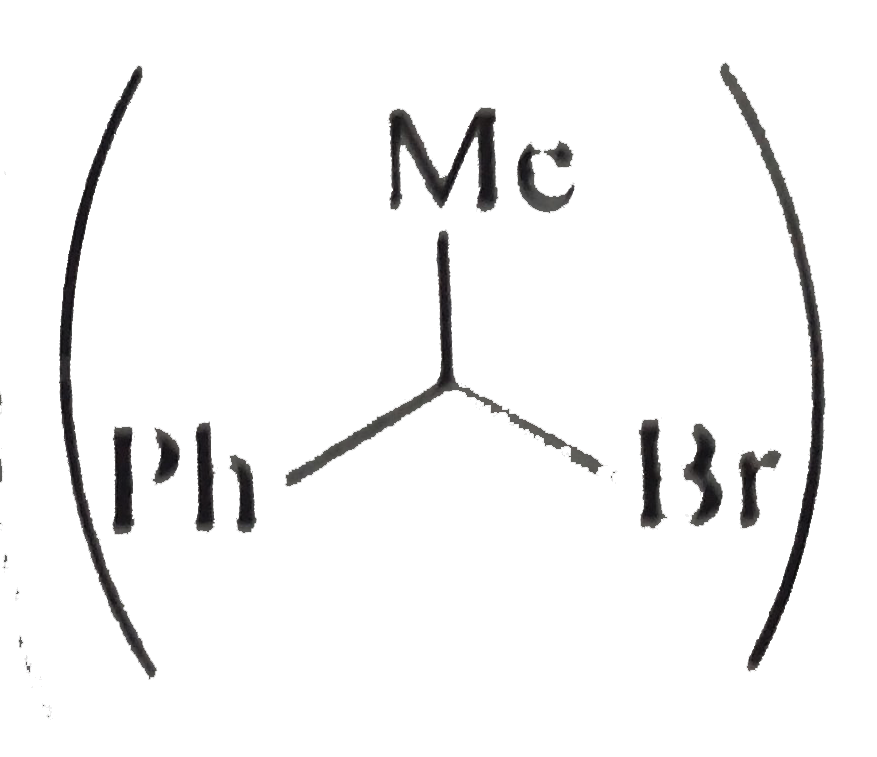
(iii) Compounds `(A)` and `(D)` give positive test with `CrO_3` in acid.
Compound `(B)` is :06:32View Solution(i) Carboxylic acid

(ii) Compound `(D)` is prepard by carbonation`(Mg//ether, CO_2//H_3 O^(+))` of compound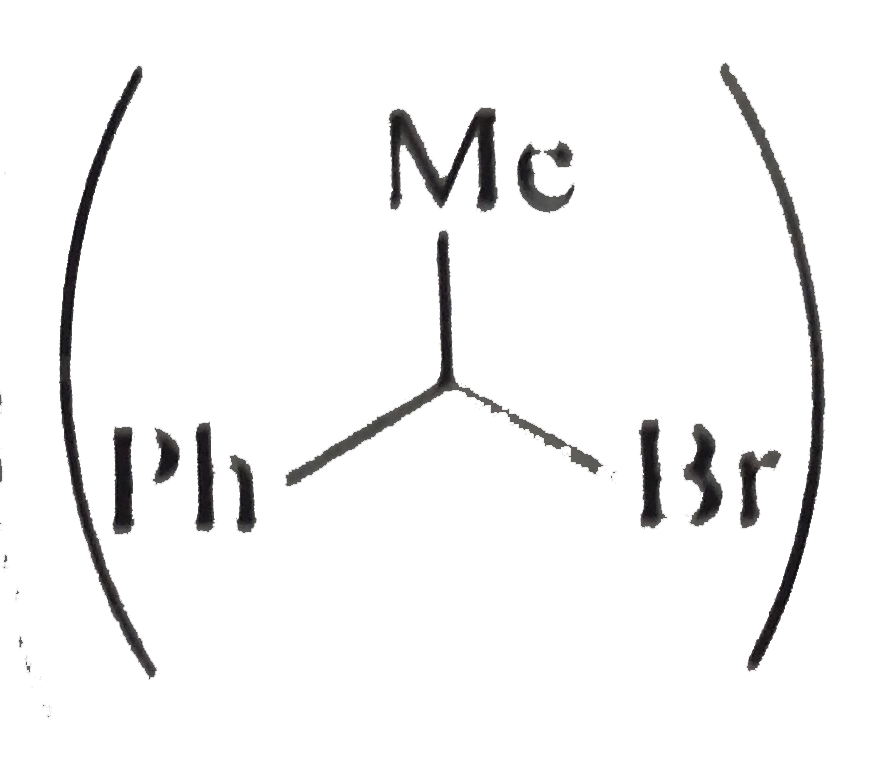
(iii) Compounds `(A)` and `(D)` give positive test with `CrO_3` in acid.
Compound `( C)` is :06:32View Solution(i) Carboxylic acid

(ii) Compound `(D)` is prepard by carbonation`(Mg//ether, CO_2//H_3 O^(+))` of compound
(iii) Compounds `(A)` and `(D)` give positive test with `CrO_3` in acid.
Compound `(A)` is isolated from alkaloid atropine and is used to relieve muscle pain. To which class of drugs does compound `(A)` belong ?07:05View Solution
Compound `(B)` is :05:26View Solution
Compound `( C)` is :05:26View Solution
Compound `( E)` is :05:26View Solution
Compound `(F)` is :05:26View Solution
Compound `(F)` is used as an artificial sweetner and is known as saccharin. It forms sodium salt. Which statement is correct about its sodium salt ?05:26View Solution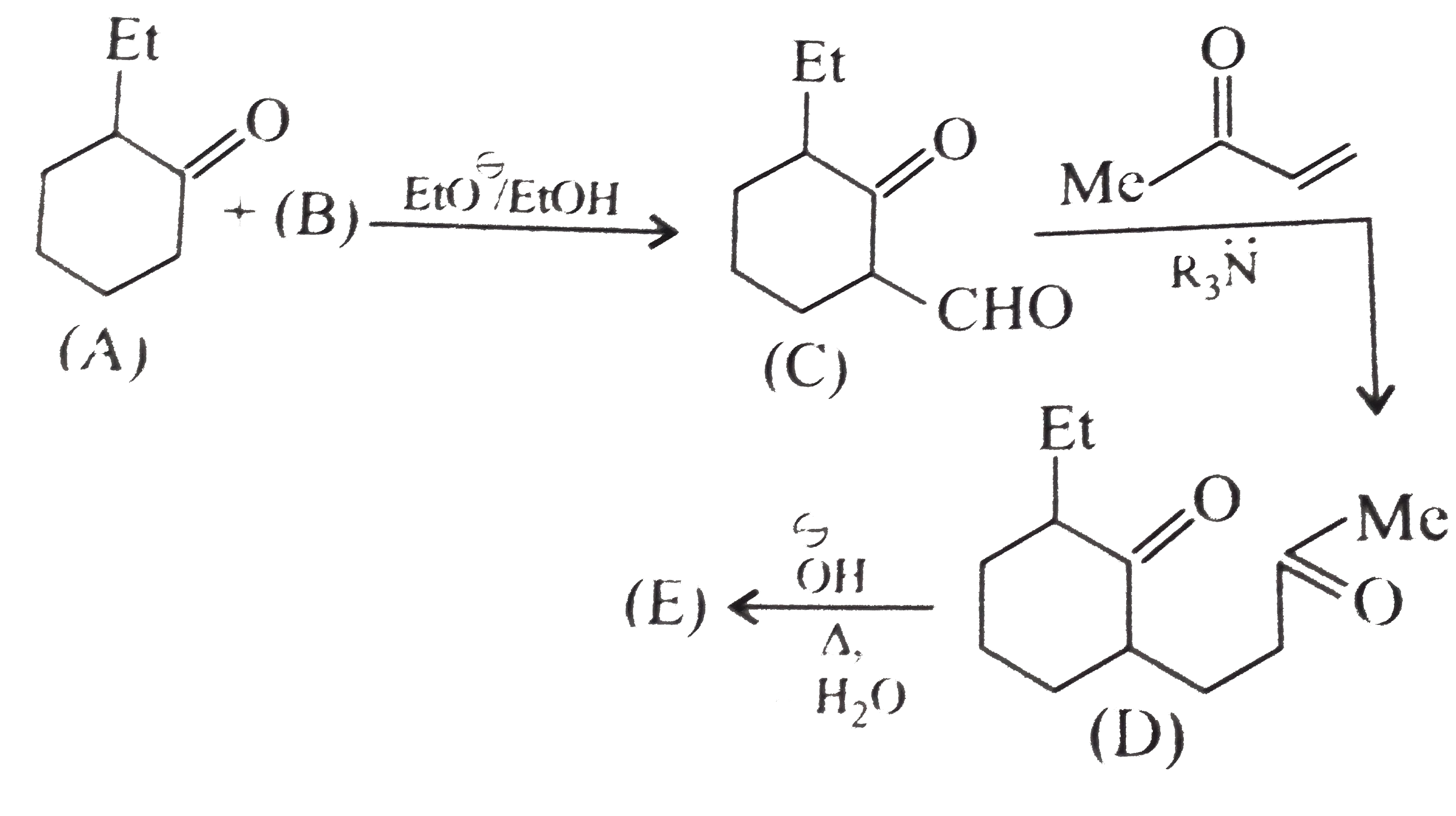
Compound `(B)` is :08:27View Solution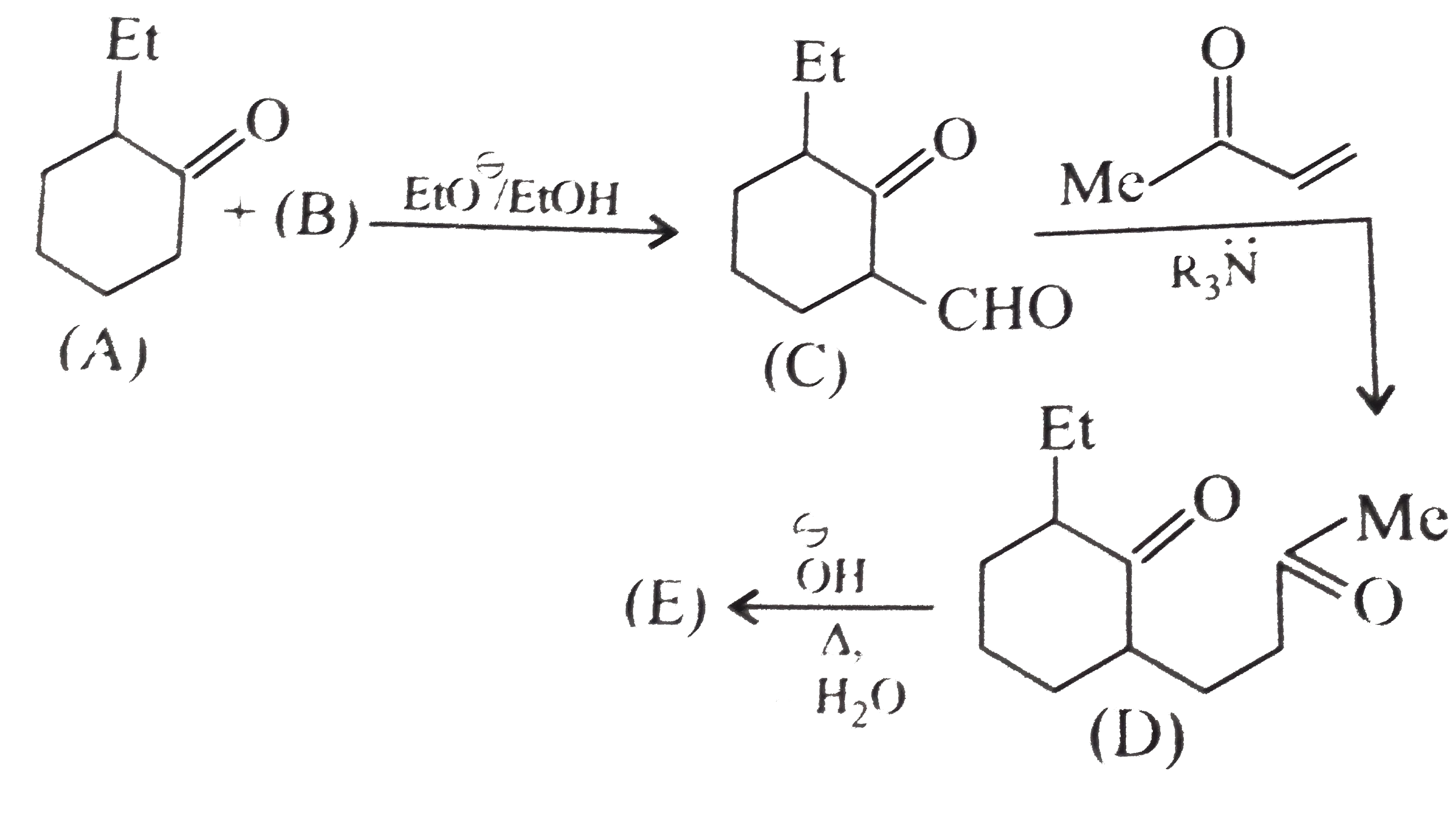
In the formation of `( C)` from `(A)` and `(B)`, which statements `(s) is //are` correct ?08:27View Solution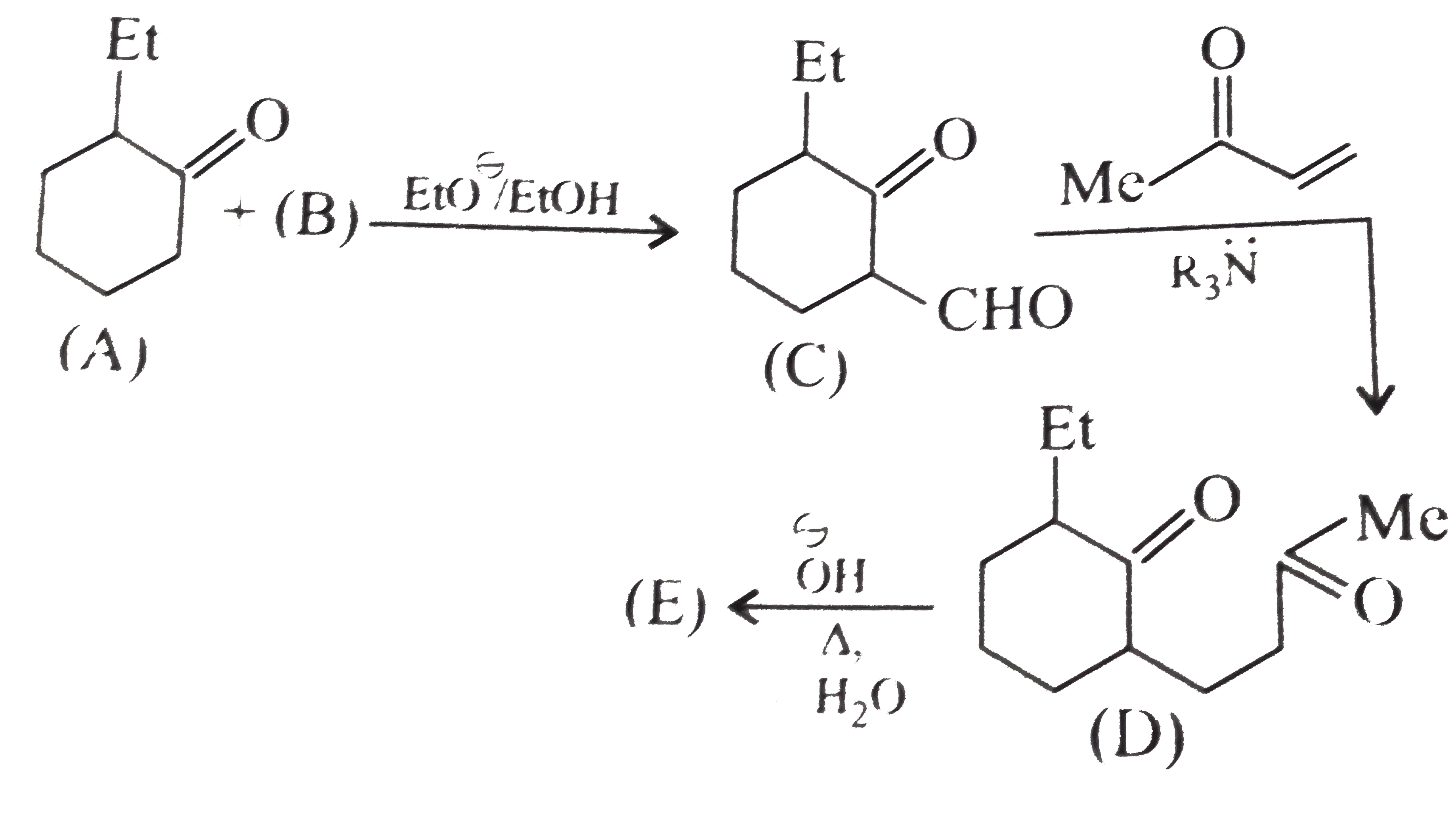
Which statement `(s) is //are` correct about the formation of `(D)` ?08:27View Solution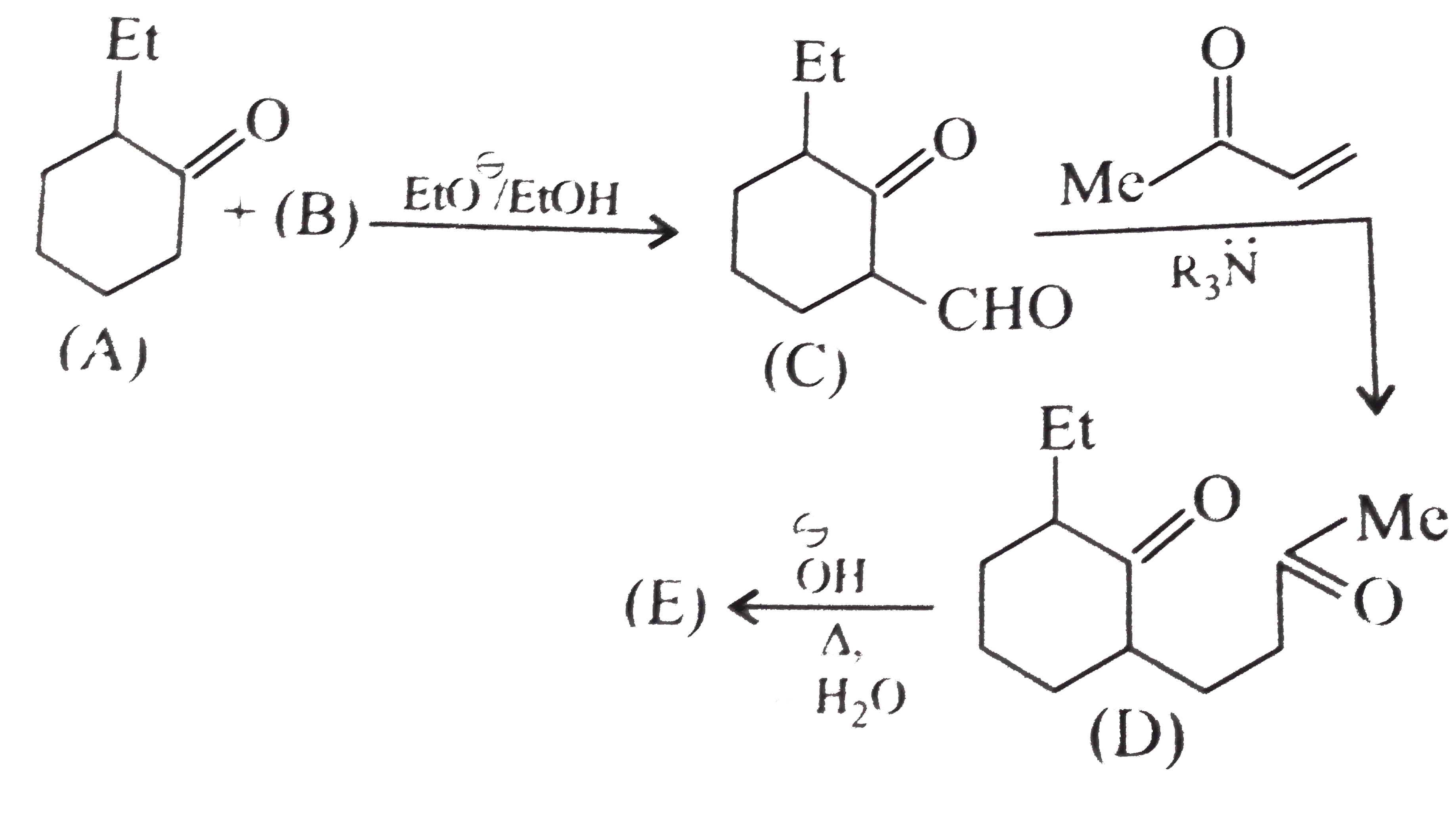
Which statements `is//are` correct about the formation of `( E)` from `(D)` ?08:27View Solution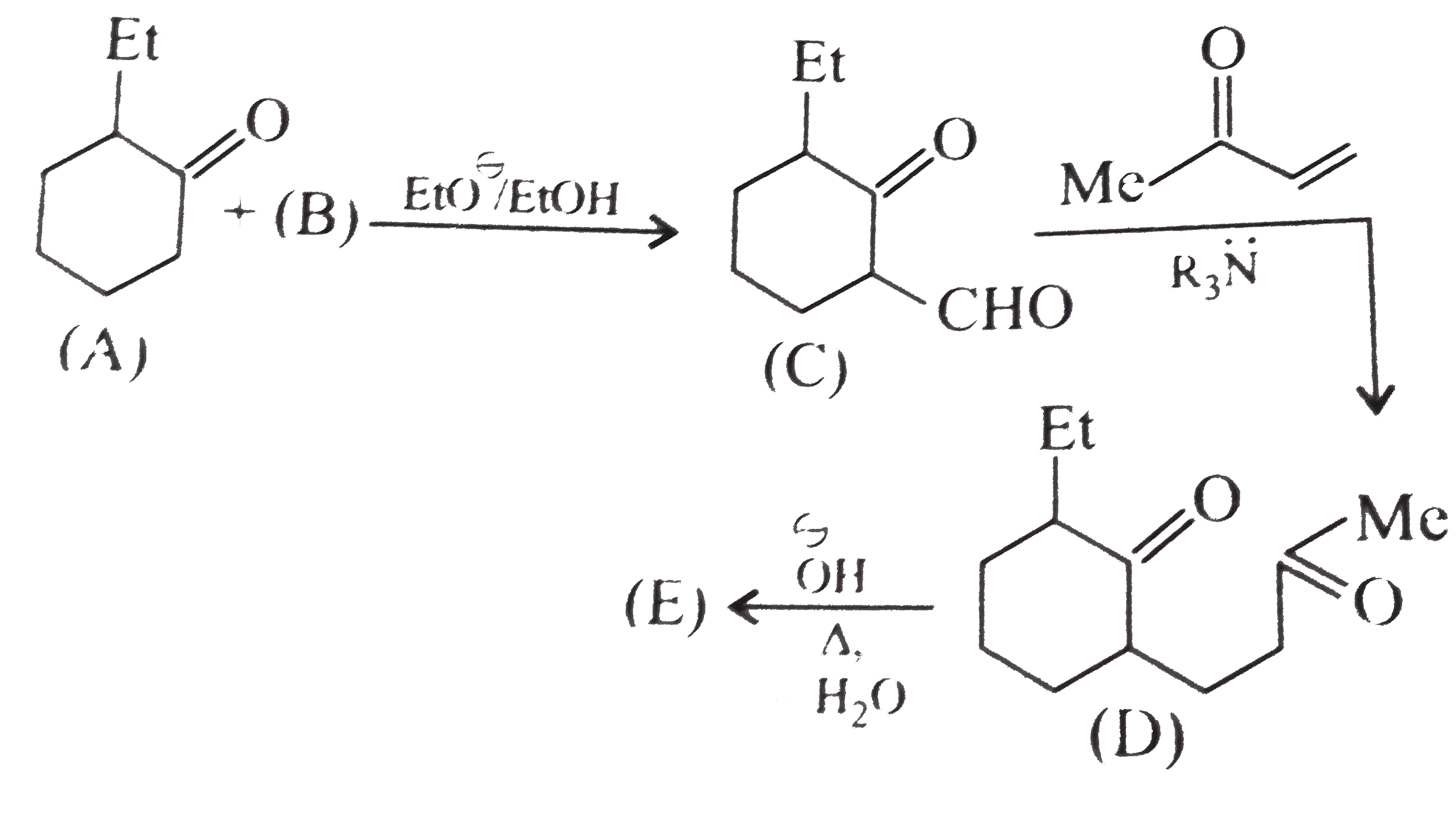
Product `( E)` is :08:27View SolutionThree isomeric tetracarboxylic acids `(I),(II)`, and `(III)` are given.

They can be distinguised by anhydride formation by treating with one equivalent and two equivalents of `SOCl_2`.
Which tetracarboxylic acid on reaction with one equivalent of `SOCl_2` gives two isomeric monoanhydrides ?05:32View SolutionThree isomeric tetracarboxylic acids `(I),(II)`, and `(III)` are given.
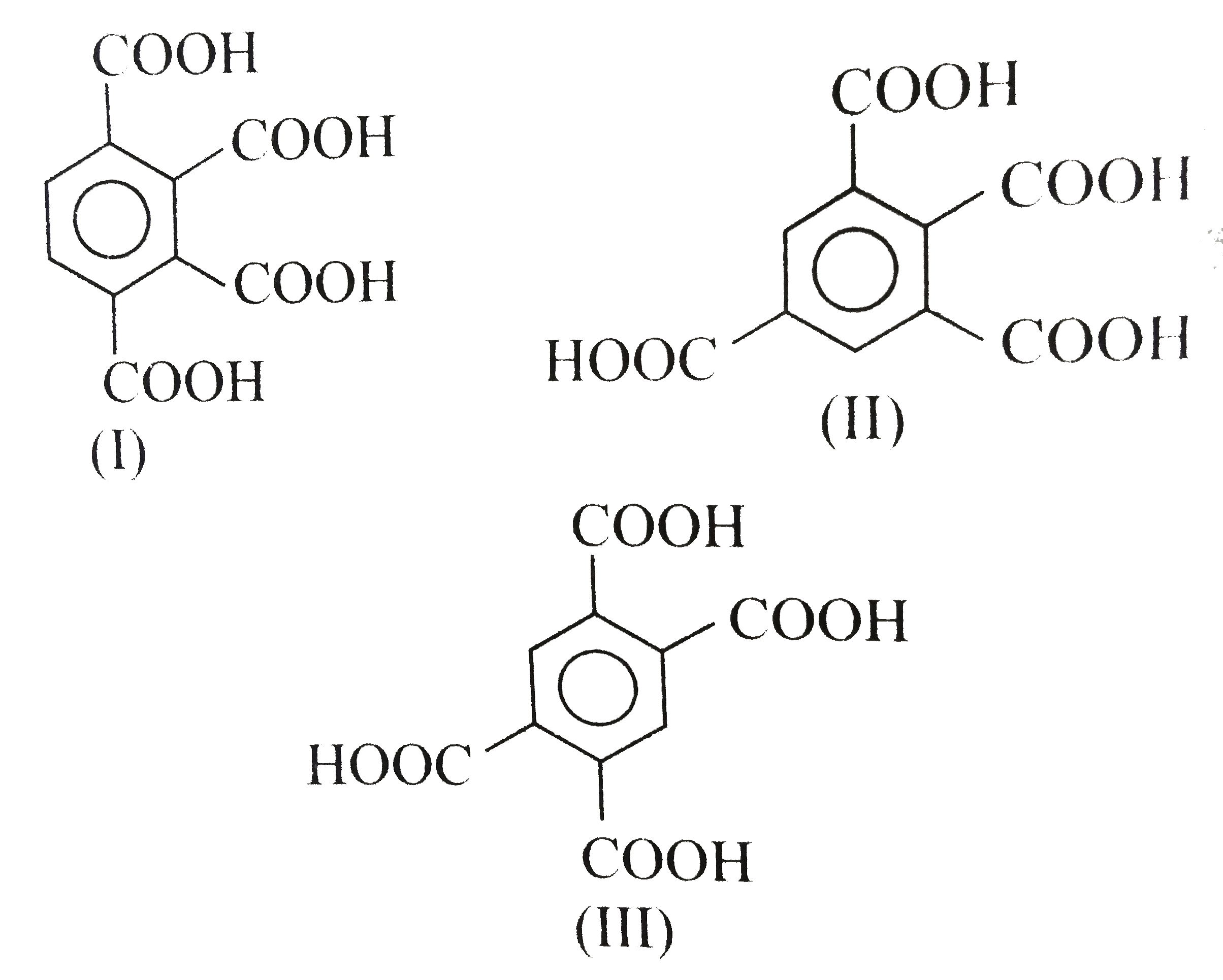
They can be distinguised by anhydride formation by treating with one equivalent and two equivalents of `SOCl_2`.
Which tetracarboxylic acid on reaction with one equivalent of `SOCl_2` gives only one monoaanhydride ?05:32View SolutionThree isomeric tetracarboxylic acids `(I),(II)`, and `(III)` are given.

They can be distinguised by anhydride formation by treating with one equivalent and two equivalents of `SOCl_2`.
Which tetracarboxylic acid on reaction with second equivalent of `SOCl_2` to the monoanhydride of `(I), (II)`, and `(III)` gives a dianhydride ?05:32View SolutionFour rearrangement reactions are given :
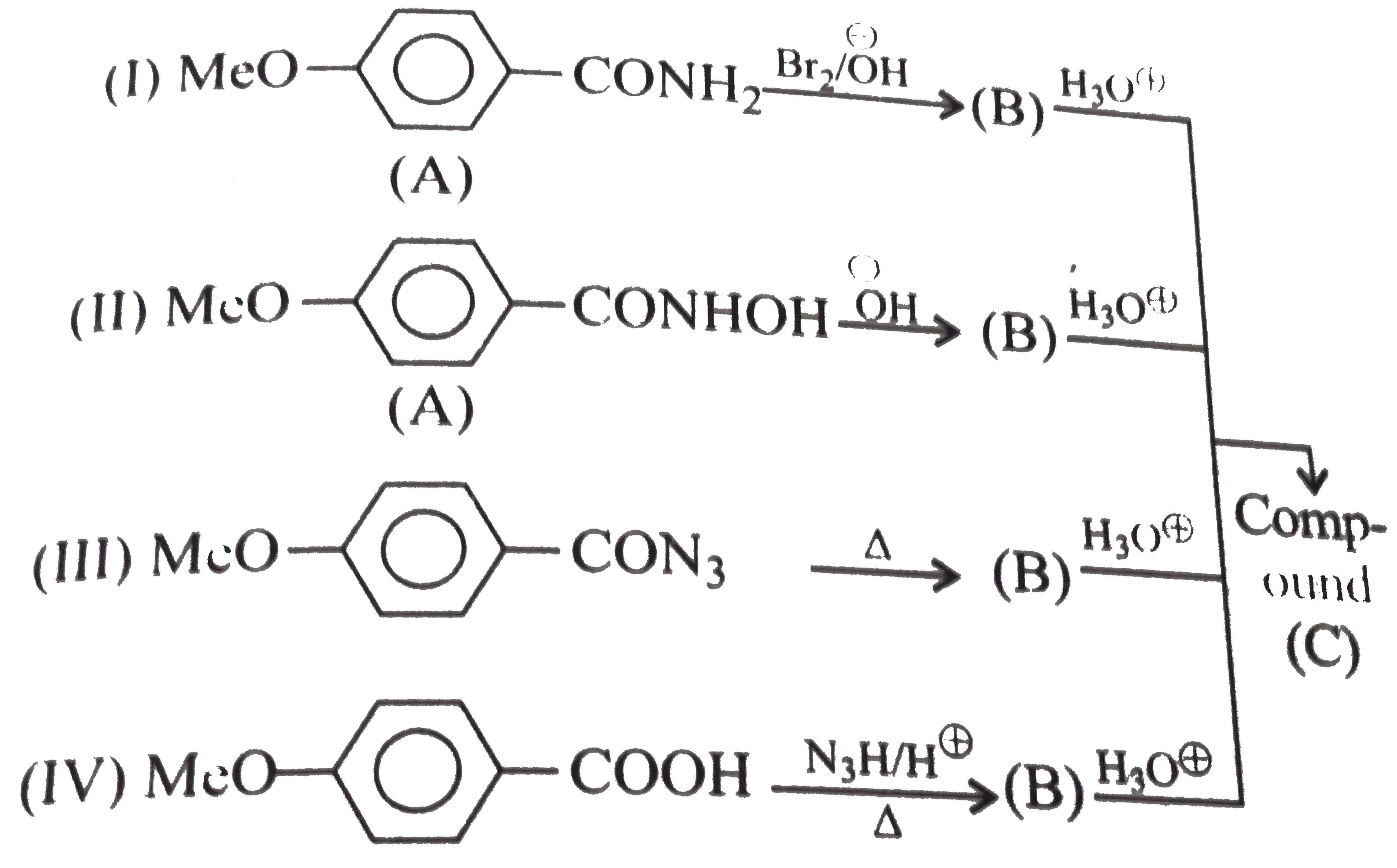
Which statement (s) is/are wrong about the reactions ?
 07:36View Solution
07:36View SolutionFour rearrangement reactions are given :
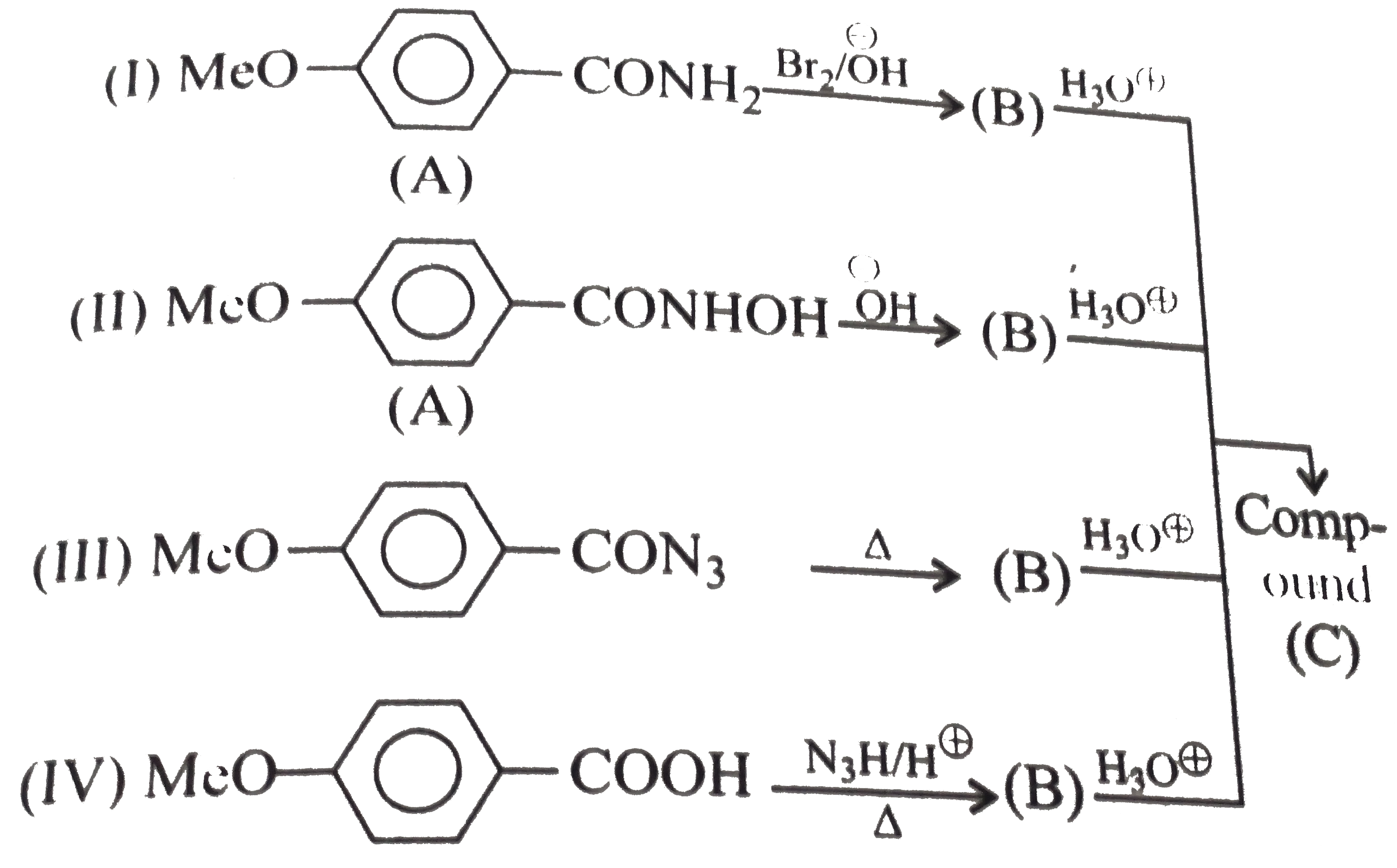
Which statement (s) is/are wrong about the reaction ?10:15View Solution
Exercises (Linked Comprehension) questions and complete solutions for chapter CARBOXYLIC ACIDS AND THEIR DERIVATIVES of CENGAGE CHEMISTRY (HINGLISH) of Class 12
All Exercises from CENGAGE CHEMISTRY Class 12 CHEMISTRY CARBOXYLIC ACIDS AND THEIR DERIVATIVES
- Exercises (Assertion-Reasoning)
- Exercises (Linked Comprehension)
- Exercises (Multiple Correct)
- Exercises (Singlecorrect)
- Exercises (Subjective)
- Exercises Archives (Analytical And Descriptive)
- Exercises Archives (Assertion-Reasoning)
- Exercises Archives (Fill In The Blanks)
- Exercises Archives (Linked Comprehension)
- Exercises Archives (Multiple Correct)
- Exercises Archives (Single Correct)
- Exercises Archives (True/False)
- Illustration
- Solved Examples
